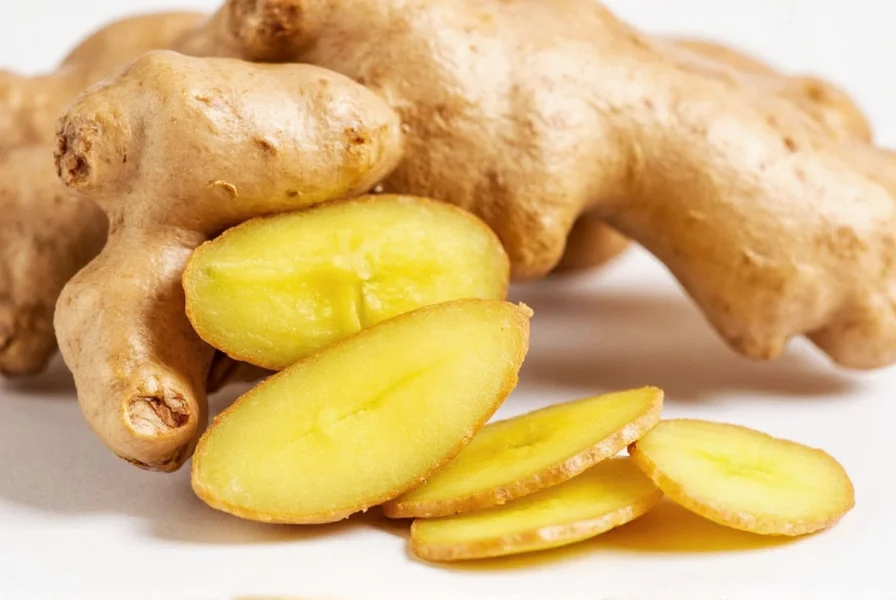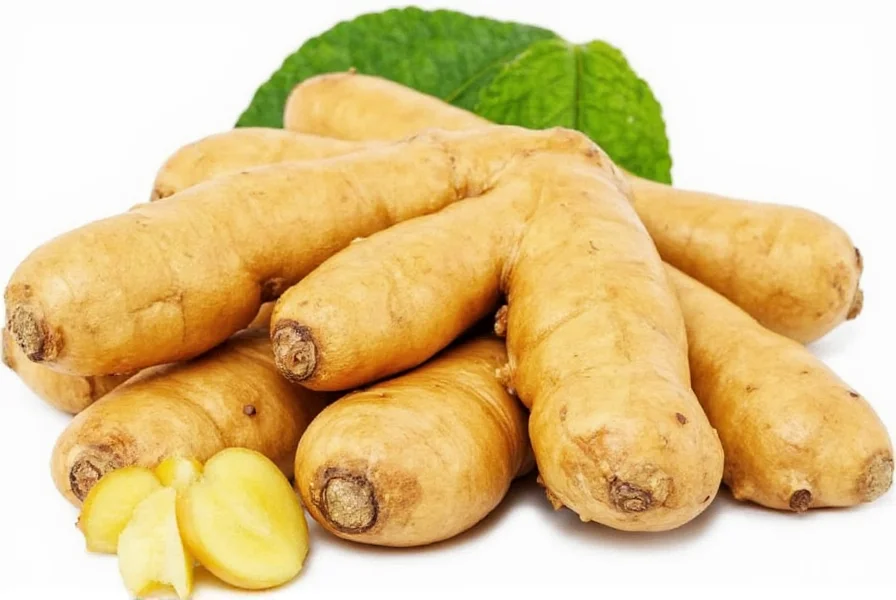Zerumbet ginger (Zingiber zerumbet), also known as shampoo ginger or pinecone ginger, is a tropical plant species distinct from common ginger (Zingiber officinale). Native to Southeast Asia, this perennial herb features unique cone-shaped inflorescences that secrete a fragrant liquid traditionally used as natural shampoo. Scientific research indicates zerumbet ginger contains zerumbone, a bioactive compound with potential anti-inflammatory and antioxidant properties currently under investigation.
Unlike the knobby rhizomes of regular ginger, zerumbet ginger produces smooth, cylindrical rhizomes with a distinctive citrus-pine aroma. This botanical difference reflects significant variations in chemical composition between Zingiber zerumbet and common ginger varieties. Researchers have identified over 50 volatile compounds in zerumbet ginger, with zerumbone representing 20-40% of its essential oil content.
Botanical Characteristics and Identification
Zerumbet ginger grows 1-2 meters tall with pseudostems formed by leaf sheaths. Its most recognizable feature is the pinecone-like inflorescence that transitions from green to red as it matures. When squeezed, mature cones release a clear, fragrant liquid historically used for hair care in Pacific Island cultures. The plant's rhizomes have a pale yellow interior with a sharper, more resinous flavor profile compared to common ginger.

Geographic Distribution and Cultivation Requirements
Native to the Indo-Malayan region, zerumbet ginger thrives in USDA hardiness zones 8-11. Successful cultivation requires:
| Growth Factor | Optimal Conditions | Tolerance Range |
|---|---|---|
| Temperature | 75-90°F (24-32°C) | 50-100°F (10-38°C) |
| Soil pH | 5.5-6.5 | 5.0-7.0 |
| Water Requirements | Consistently moist | Seasonally dry periods |
| Light Exposure | Partial shade | Full sun to deep shade |
Gardeners in temperate climates often grow zerumbet ginger as an annual or in containers that can be moved indoors during winter. The plant requires well-draining soil rich in organic matter and benefits from monthly applications of balanced fertilizer during growing season. Unlike common ginger, zerumbet demonstrates greater resistance to rhizome rot diseases when proper drainage is maintained.
Traditional Applications Across Cultures
Indigenous communities across Southeast Asia and the Pacific have utilized zerumbet ginger for centuries. Traditional applications include:
- Hawaiian practitioners used the inflorescence liquid as a natural hair conditioner and fragrance
- Malaysian folk medicine employed rhizome preparations for treating fever and digestive issues
- Thai traditional healers incorporated the plant in topical applications for skin conditions
- Filipino communities used leaf extracts for wound treatment
These traditional zerumbet ginger uses reflect cultural knowledge accumulated over generations, though modern science continues to investigate which applications have biochemical validation. The plant's role in traditional medicine systems represents ethnobotanical knowledge that informs contemporary research directions.
Scientific Research on Bioactive Properties
Current scientific interest focuses primarily on zerumbone, the major sesquiterpene in zerumbet ginger. Laboratory studies suggest potential mechanisms including:
- Modulation of inflammatory pathways through NF-kB inhibition
- Antioxidant activity demonstrated in cellular models
- Potential chemopreventive properties observed in animal studies
- Antimicrobial effects against certain bacterial strains
A 2022 review in the Journal of Ethnopharmacology analyzed 37 studies on zerumbet ginger, noting promising preliminary results but emphasizing the need for more human clinical trials. Researchers caution that most findings come from in vitro or animal models, and direct health benefits for humans remain unconfirmed. The scientific community generally agrees that while zerumbet ginger shows interesting bioactive potential, current evidence doesn't support specific medical claims.
Comparison with Common Ginger Varieties
Understanding the differences between zerumbet ginger and common ginger (Zingiber officinale) is essential for proper utilization:
| Characteristic | Zerumbet Ginger | Common Ginger |
|---|---|---|
| Scientific Name | Zingiber zerumbet | Zingiber officinale |
| Primary Bioactive Compound | Zerumbone | Gingerol |
| Rhizome Texture | Smooth, cylindrical | Knobby, branched |
| Flavor Profile | Citrus-pine, resinous | Pungent, spicy |
| Traditional Culinary Use | Limited (more medicinal) | Widespread in global cuisines |
Chefs working with zerumbet ginger note its unique flavor profile doesn't substitute directly for common ginger in recipes. The distinctive taste works best in specific applications like Southeast Asian curries or as a flavoring agent in artisanal beverages. Food scientists studying zerumbet ginger applications recommend using it in smaller quantities than common ginger due to its more intense flavor compounds.
Safety Considerations and Current Understanding
Preliminary safety data suggests zerumbet ginger is generally well-tolerated when consumed in food amounts. However, concentrated extracts require caution:
- Limited human studies mean definitive safety profiles for therapeutic doses remain undetermined
- Animal studies show potential blood-thinning effects at high doses
- Pregnant women should consult healthcare providers before medicinal use
- Those with ginger allergies may experience cross-reactivity
The European Food Safety Authority hasn't established an official acceptable daily intake for zerumbet ginger compounds. Researchers studying zerumbet ginger safety recommend starting with small culinary amounts before considering concentrated forms. As with any botanical, potential interactions with medications warrant professional consultation.
Modern Applications and Future Research Directions
Current zerumbet ginger applications extend beyond traditional uses:
- Natural product developers are exploring zerumbone for cosmetic formulations
- Agricultural researchers study its potential as a natural pesticide
- Food scientists investigate its use as a natural preservative
- Pharmaceutical companies are examining delivery mechanisms for zerumbone
Several clinical trials are underway investigating zerumbet ginger extracts for specific applications, though results won't be available for several years. The National Center for Complementary and Integrative Health lists multiple active studies examining zerumbone's mechanisms of action. As research progresses, our understanding of zerumbet ginger's potential applications will continue evolving based on scientific evidence rather than anecdotal reports.

Conclusion
Zerumbet ginger represents a fascinating botanical with distinctive characteristics that differentiate it from common ginger varieties. While traditional uses provide valuable ethnobotanical context, scientific research continues to investigate its bioactive properties with appropriate methodological rigor. Current evidence supports culinary use of zerumbet ginger as a flavorful ingredient, while therapeutic applications require further study through controlled clinical trials. As with any botanical, understanding both traditional knowledge and scientific evidence provides the most balanced perspective on zerumbet ginger's potential role in health and wellness practices.
Frequently Asked Questions
What is the difference between zerumbet ginger and regular ginger?
Zerumbet ginger (Zingiber zerumbet) differs from regular ginger (Zingiber officinale) in several key ways. Botanically, zerumbet produces smooth, cylindrical rhizomes with a citrus-pine aroma, while common ginger has knobby, branched rhizomes. Chemically, zerumbet's primary compound is zerumbone (20-40% of essential oil), whereas common ginger contains gingerol as its main bioactive component. The plants also differ in appearance, with zerumbet featuring distinctive pinecone-shaped inflorescences that secrete a fragrant liquid.
What are the scientifically supported benefits of zerumbet ginger?
Current scientific research on zerumbet ginger primarily focuses on zerumbone, its main bioactive compound. Laboratory studies suggest potential anti-inflammatory and antioxidant properties, with some research indicating possible chemopreventive effects. However, most findings come from in vitro (test tube) or animal studies. As of 2023, there are limited human clinical trials, so definitive health benefits for humans remain unconfirmed. The scientific community emphasizes that while preliminary results are interesting, more research is needed before making specific health claims about zerumbet ginger.
Can I grow zerumbet ginger in my garden?
Yes, you can grow zerumbet ginger if you live in USDA hardiness zones 8-11. It requires partial shade, consistently moist but well-draining soil with pH 5.5-6.5, and temperatures between 75-90°F (24-32°C). In cooler climates, grow it as an annual or in containers that can be moved indoors during winter. Plant rhizomes 2-4 inches deep in spring after soil warms. The plant typically reaches 1-2 meters in height and produces its distinctive pinecone flowers in late summer. Unlike common ginger, zerumbet demonstrates better resistance to rhizome rot when proper drainage is maintained.
Is zerumbet ginger safe to consume?
Zerumbet ginger appears safe when consumed in typical culinary amounts, similar to common ginger. However, concentrated extracts or medicinal doses require caution due to limited human safety data. Preliminary research suggests potential blood-thinning effects at high doses. Pregnant women should consult healthcare providers before medicinal use, and those with ginger allergies may experience cross-reactivity. As with any botanical, it's advisable to start with small culinary amounts before considering concentrated forms, and consult a healthcare professional if taking medications due to potential interactions.











 浙公网安备
33010002000092号
浙公网安备
33010002000092号 浙B2-20120091-4
浙B2-20120091-4